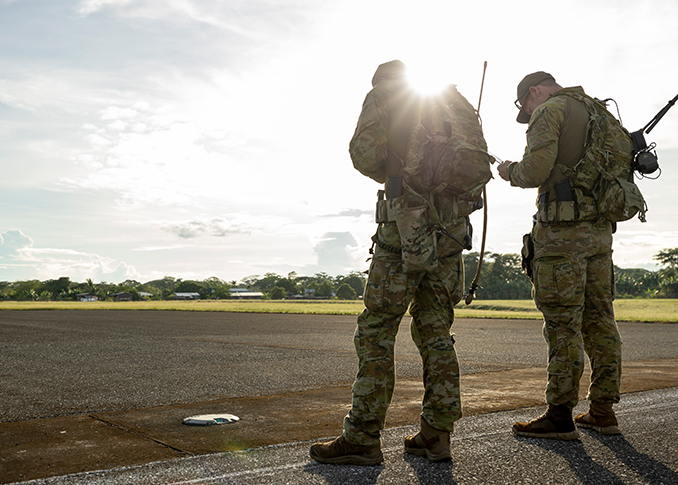Case Study
Innovation to deliver route search capability to remove soldiers from danger
Aug 6, 2023 • 1 min read
Background
Downer Professional Services (DPS) is assisting the Australian Defence Force (ADF) innovations to shape, deter and respond across the land, air, sea, space and cyber domains.
The ADF - through the Defence Innovation Hub (DIH) - is seeking innovative and specialised technologies to undertake this mission.
Current limited technologies to solve Route Search capabilities are slow and tedious which imposes significant cognitive load on commanders and operators. In addition, they are extremely risky to undertake without a specialised solution.
The Army and the Defence Science Technology Group have engaged Downer Professional Services (DPS) to develop the Muskito project, a route search technology that removes the risk imposed on Defence personnel.
The intention of DIH innovation projects is to take a concept and swiftly and effectively move it through the various stages with the goal of eventually maturing the concept to be a deployed capability within the ADF.
What we did
Downer was engaged to provide a Muskito Concept Demonstrator to Army and DIH.
The Phase 2 DIH project was designed to provide a demonstration of the Muskito capability demonstrating its feasibility to provide a route search capability and provide commanders and search team soldiers the ability to scan a chosen route for a range of threat types both above and below the surface.
It was also to demonstrate the feasibility of providing route search capability that provided adequate “stand off” in order to “remove the soldier from the danger” at the same time as providing a complete picture of the route and dangers on it.
The capability also needed to demonstrate that by using Artificial Intelligence and Machine learning to process the multiple sensor data streams, Muskito could reduce cognitive load on the commander and operators, to enable faster and prolonged route search operations to be successfully and safely performed.
Downer engaged three highly qualified and experienced partners and then led the technical design in the role of Technical Design authority for the project.
The design involved gaining an understanding of a number of various and disparate technologies, including sub surface radar, RGB and Infrared sensors.
It also required the design to incorporate the Command and Control (C2) of a UGV and UAV and tie this with the other sensor streams and AI output into a common operating picture which is represented on a GIS, accurate display.
The C2 interfaces for the UAV & UGV was provided on 2 other terminals to enable the respective operators to manage the function of each of the ground and air platforms, that form the basis of the Muskito capability.
The design also needed to incorporate a “common C2 platform” for the entire capability.
Downer is exploring the next phase of the project, which will need to revisit and update the design and build to mature the capability to be able to function in a less constrained or “artificial” environment.
Results
The Muskito concept has been demonstrated to be feasible and a foreseeable addition to the ADF’s Formed Route Search capability set.
Downer has engaged with Army and other stakeholders for a number of years prior to the start of this project to develop a clear understanding of requirements and any shortfalls in their current capability.
By working with the client’s key stakeholders well before the start of the project, owner was able to better understand what would be required to successfully deliver, true measurable benefits to Defence.

